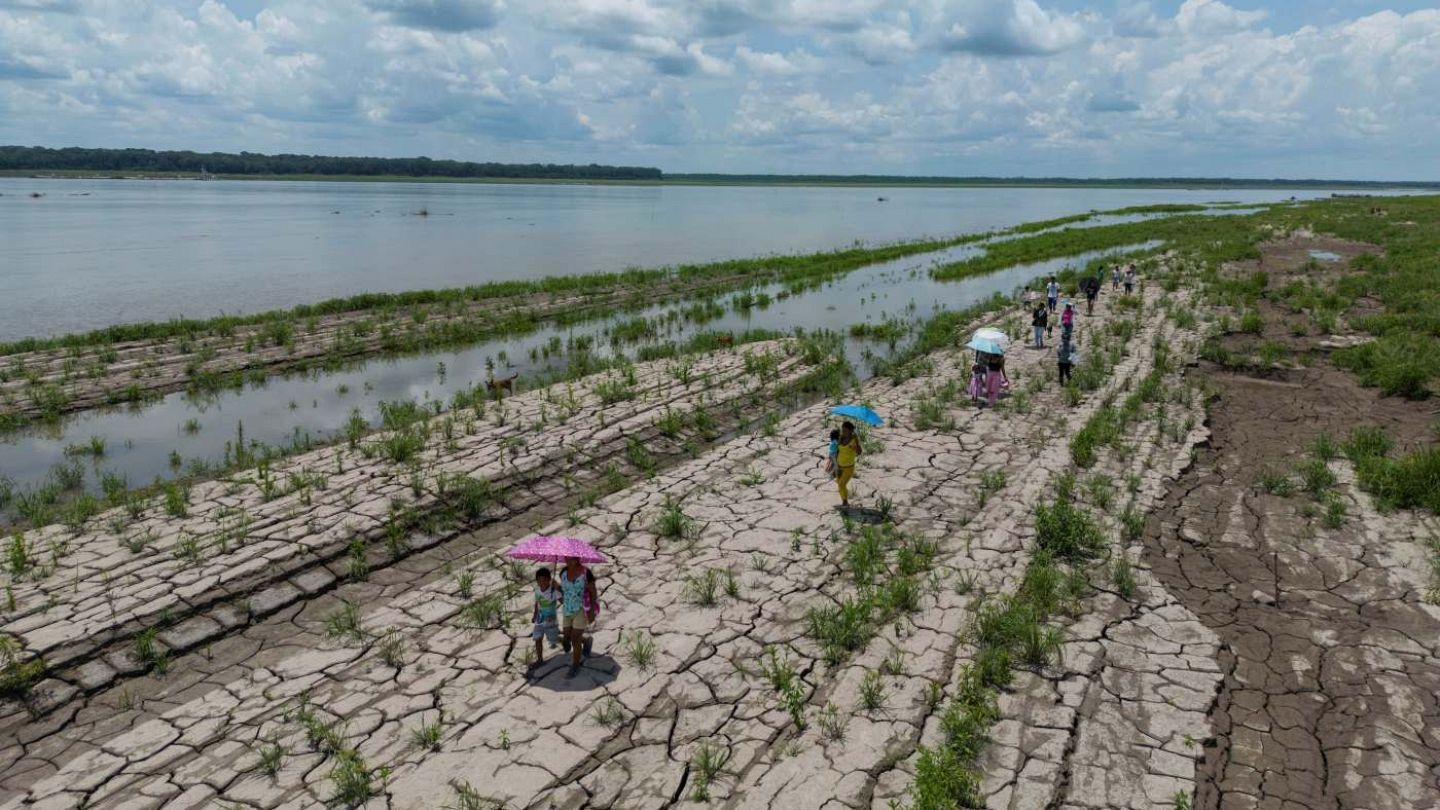Water Wars 2.0: Data centers are worsening the situation in arid regions.
With the increasing demand for cloud computing and artificial intelligence, it is estimated that the number of data centers owned by large companies worldwide will increase by 78%.
Tech giants Amazon, Microsoft, and Google operate massive data centers in some of the driest regions of the world, consuming enormous amounts of water. In fact, these companies plan to build many more. According to a joint investigation by SourceMaterial and The Guardian, these three tech giants, which have also received support from U.S. President Donald Trump, plan to establish hundreds of new data centers across the U.S. and around the world. This situation could have a significant impact on communities that are already facing water shortages. "The water issue will become very critical," adds Lorena Jaume-Palasí, founder of the Ethical Tech Society: "It will be very difficult for these communities to build resilience in terms of resources."
Internal Opposition at Amazon Amazon, the world's largest online retailer, is facing opposition even within the company regarding its efforts to reduce water usage. According to SourceMaterial's research, one of Amazon's own sustainability experts warned that these plans are unethical. Spokespeople for Amazon and Google defended their projects by stating that they always take water scarcity into account in their responses to questions from The Guardian and SourceMaterial. Microsoft declined to comment.
Large Amounts of Water Used for Data Centers Data centers consist of massive storage units filled with servers that function for remote data storage and processing, as well as for training artificial intelligence models (such as ChatGPT). Huge amounts of water are used to cool the equipment in these centers. SourceMaterial found that 38 active data centers owned by Amazon, Microsoft, and Google are located in areas currently experiencing water shortages, and 24 more are under construction. The exact locations of data centers are usually industrial secrets. However, thanks to local news sources and industry resources like Baxtel and Data Center Map, SourceMaterial mapped out 632 active or under-construction data centers belonging to these three companies. This map shows that, with the increasing demand for cloud computing and artificial intelligence, the number of data centers owned by companies will increase by 78% worldwide. New constructions are planned in North and South America, Europe, Asia, Africa, and Australia.
In regions where water resources are abundant, the high water usage of data centers poses less of a problem. However, Microsoft disclosed that 42% of the water it used in 2023 came from areas under 'water stress,' while Google stated that 15% of its water usage came from areas experiencing 'high water scarcity.' Amazon did not share any data on this matter.
According to the analysis by SourceMaterial and The Guardian, these companies now plan to expand their operations in the world's driest regions. Jaume-Palasí states, "The construction of data centers in arid regions is no coincidence," adding: "Because these centers must be built in inland areas where humidity is low and the risk of metals rusting is minimal. Seawater, when used for cooling, has a corrosive effect."
'Your Cloud is Drying Up My River' The three new data centers proposed by Amazon in the Aragon region of northern Spain have permission to use approximately 755,720 cubic meters of water per year. This amount is equivalent to the water needed to irrigate about 233 hectares of corn, one of the region's main crops. However, this figure does not include the water used in the production of electricity that will power the data centers, so real consumption is expected to be higher. According to Aaron Wemhoff, an energy efficiency expert at Villanova University, the energy consumption of these three new Amazon centers will exceed the current electricity usage of the entire Aragon region. In December, Amazon applied to authorities to increase the water usage of its three existing data centers in the region by 48%. Critics accuse Amazon of speeding up the process undemocratically by making this application during the Christmas period. "They use too much water, and they use too much energy," says Aurora Gómez, a representative of the campaign group Tu Nube Seca Mi Río (translated: 'Your Cloud is Drying Up My River'). The group has called for a moratorium on new data centers due to water scarcity in Spain.
Due to extreme weather events associated with the climate crisis, heat-related deaths are increasing in Spain. Last month, the Aragon government requested assistance from the European Union to combat drought. Farmer Chechu Sánchez is worried that data centers will consume the water necessary for his crops: "These data centers are using our water from northern Aragon. So where are they getting this water? Of course, from us." Jaume-Palasí reminds that 75% of the country is at risk of desertification, stating that the combination of the climate crisis and the expansion of data centers has brought Spain to the "brink of ecological collapse."
A spokesperson from the Aragon government claimed that the new data centers would not endanger water resources, as their impacts are "too small to be detected."
'Water Compensation' Amazon does not disclose total data on how much water its data centers consume worldwide. However, it claims it will be 'water positive' by 2030, meaning it will balance its water usage by providing more water to communities and ecosystems in scarce areas than it consumes. The company states that it currently compensates for 41% of its water consumption in regions it considers 'unsustainable.' However, this approach is controversial even within the company. Nathan Wangusi, Amazon’s former water sustainability manager, states he resigned, saying, "I raised this issue in every appropriate forum. It's unethical."
Microsoft and Google also aim to be 'water positive' by 2030, targeting more efficient water usage and compensation projects. However, according to Wemhoff, this approach, compared to carbon compensation, is problematic because water, unlike carbon, is a local resource. Providing water to a community in one area does not benefit a community losing water elsewhere. "Carbon is a global issue, but water is a more local matter," Wemhoff says. Wangusi believes that Amazon should invest in water access projects not to 'offset the company's water consumption,' but to 'do the right thing.'
In March, Amazon announced it would utilize artificial intelligence to help farmers in Aragon use water more efficiently. However, campaigner Gómez describes this as a 'deliberate distraction strategy' to divert attention from the company's request to increase its water consumption. Amazon, however, asserts that its approach cannot be defined as 'compensation' because the projects are being implemented in the regions where the company operates. Amazon spokesperson Harry Staight states, "We know water is a valuable resource, and we are committed to contributing to the solution of this problem."
Expanding in Dry Regions Following Amazon, the company with the most data centers in the world through Amazon Web Services (AWS), Google and Microsoft are rapidly growing. In the U.S., which has the most data centers in the world, SourceMaterial data indicates that Google is the company most likely to establish data centers in dry regions. It has seven active data centers in areas experiencing water scarcity, with six more under construction.
Jenn Duff, a city council member in Mesa, Arizona, a rapidly growing data center hub, says, "We need to be very careful about the increase of large water users." In January, Meta (the owner of Facebook, WhatsApp, and Instagram) opened a $1 billion data center in the city. Google is also establishing two new centers here. Maricopa County, where Microsoft has two active data centers, is classified as being in 'extreme drought' by the U.S. National Oceanic and Atmospheric Administration. In June 2023, Arizona officials canceled building permits for some new housing projects due to insufficient groundwater.
However, the drought did not halt Google's plans for its second Mesa data center. The first center has permission to use 5.5 million cubic meters of water annually. This is equivalent to the annual water consumption of about 23,000 Arizonans. "Is the tax revenue and the few jobs provided worth this much water?" asks Professor Kathryn Sorensen from Arizona State University. She then warns: "City councils need to think very carefully and assess the risks well." Google states that it plans to use an air cooling system instead of water in its new data center in Mesa.
Google spokesperson Chris Mussett says, “Cooling systems are determined by hyper-local decisions; we are acting in line with our data-driven 'climate-friendly cooling' strategy that balances the carbon footprint and water resources.”
Stargate In January, Trump announced the 'Project Stargate' initiative at the White House, calling it 'the largest artificial intelligence infrastructure project in history.' This $500 billion joint venture, starting in Texas, will be funded by OpenAI, Oracle, Japan-based SoftBank, and UAE investment company MGX. One day before Trump’s announcement, Chinese company DeepSeek introduced a new artificial intelligence model claiming to use much less computing power (and thus less water) compared to its Western competitors.
More recently, Bloomberg reported that Microsoft withdrew some of its global new data center plans. Microsoft published a design for a data center that consumes 'zero water.' Google also announced that it would implement air cooling systems to reduce water usage. However, it is still unclear how these systems will work. Jaume-Palasí is skeptical: “I will believe it when I see it. Because right now, most data centers are transitioning from water cooling to air cooling. Liquids are more efficient at cooling AI servers that process dense data.”
The Trump administration has promised to expedite new projects to provide energy for these new data centers, but no explanation has yet been provided regarding the amount of water these centers will consume. "Neither people nor data can live without water," says campaigner Gómez. She also reminds a universal rule: "But human life is indispensable, data is not." We will see if companies will heed this.


